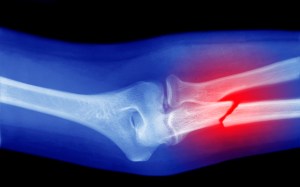With the bomb cyclone hammering much of the Northeast, pay attention to emergency personnel because it’s dangerous out there. Dropping temperatures can cause hypothermia and frostbite.
If you have to leave your house during this storm, it’s important to consider wind chill. As The Weather Channel explains, wind chill can also be described as the “feels like” temperature.
Videos by PopCulture.com
“This is because the wind strips away the thin layer of warm air above your skin,” The Weather Channel explains. “The stronger the wind, the more heat lost from your body, and the colder it will feel. When the winds are light, it will feel closer to the actual air temperature.”
For example, the air temperature might show that it’s 10 degrees outside, but there is also a 15 mph wind. According to a National Weather Service (NWS) chart, it could feel like minus seven degrees outside.

The more extreme the wind chill, the more dangerous it can be for you outside. You will have a high risk of hypothermia, which happens when your core body temperature drops below 95 degrees.
To prevent hypothermia, the NWS suggests you dress in layers, wrap yourself up well, avoid walking into breezes, eat hot foods and drink warm drinks and make sure you wear a warm hat. If you start feeling cold, sluggish and have trouble thinking clearly, you should go to an emergency room, the NWS says.
You can also be in danger of frostbite. In extremely cold temperatures, you can begin developing frostbite after just five minutes outside, according to the NWS chart above. However, it is not forecast to get that cold during the bomb cyclone.
For example, it was 23 degrees Thursday in New York but felt like 11 degrees with the wind at 14 mph. Still, that would cause frostbite in about 30 minutes.
The best way to avoid frostbite is to stay inside during the extreme cold. If you have to go outside, make sure every part of your body is covered. That includes your ears, nose, fingers and toes. You also want to stay hydrated, but avoid alcohol and coffee.
Photo credit: Bill Greene/The Boston Globe via Getty Images









